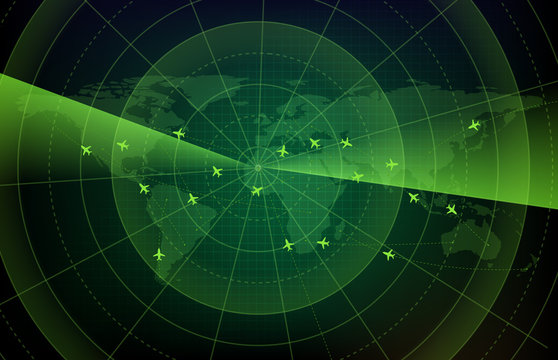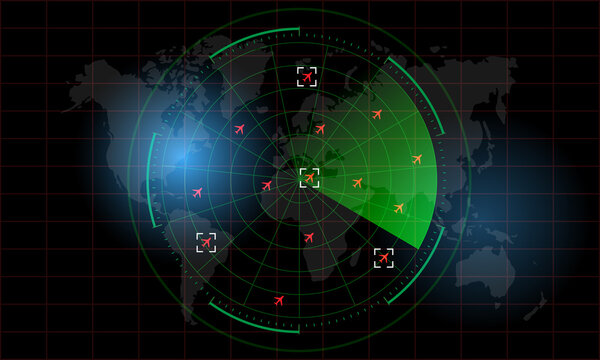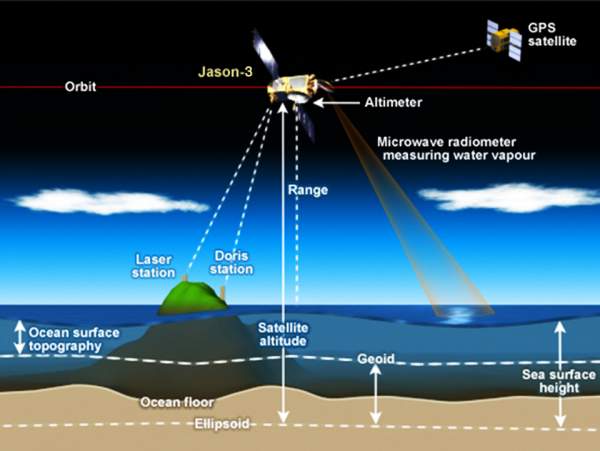Introduction
Definition of Air Radar
Imagine a world where flying was dangerous and a jet’s only means of staying on course and avoiding collisions was by using visual cues. Thankfully, as of the amazing advancement in technology, that is not the reality we live in. This article will look at the inner workings of air radar, how it is urban, how it is used in real-world situations, and how it has altered aviation and military operations.
Air Radar, short for Radio finding and ranging, is a technology that uses radio impressions to detect, locate, and track objects. In the context of aviation, it plays a crucial role in ensuring the security and efficiency of air travel.
-
Importance in Military and Aviation
From military defense to profitable aviation, has become a requisite tool. It provides crucial information about the surrounding airspace, enabling pilots and air traffic controllers to make knowledgeable decisions.
-
Evolution of Air Radar Technology
-
Early Radar Systems
The journeys of Air Radar begin with basic systems developed during the early 20th century. These systems evolved from basic radio wave experiments to the stylish radar technology we have today.
-
Advancements over the Years
Advancements in electronics, signal handing out, and equipment have propelled Air technology forward. Modern radar systems boast unprecedented truth and range, making them helpful in various industries.
III. How Air Radar Works
-
Basics of Radar Operation
At its core, radar operates by producing radio waves, which bounce off material in their path. The returning signal is then analyzed to determine the distance, speed, and course of the objects.
-
Types of Radar Systems
Different types of radar systems cater to explicit needs, such as surveillance radar for broad coverage and tracking radar for precise targeting. Additionally, sit-out radar aids in monitoring moody conditions.
-
Applications in Different Industries
Beyond aviation and military, radar technology finds application in fields like meteorology, maritime steering, and even automotive safety systems.
-
Key Components of Air Radar
-
Transmitter and Receiver
The transmitter produces radio waves, while the receiver imprisons and analyzes the reflected signals. This interplay forms the foundation of radar functionality.
Free Live Satellite View Unveiling the World from Above
-
Antenna Systems
Antennas are crucial for transmitting and receiving signals. Advancement in antenna technology contributes to the increased inaccuracy and range of modern radar systems.
-
Signal Processing Unit
The brain of the radar system, the signal dispensation unit interprets the received data, if actionable information to users.
-
Types of Air Radar
-
Surveillance Radar
Surveillance radar scans a wide area, and checks for potential threats or obstructions. It serves as the first line of protection in both military and national contexts.
-
Tracking Radar
Tracking radar is precision-focused, observance tabs on specific matter with high accuracy. It plays a vital role in guiding missiles and ensures air traffic safety.
-
Weather Radar
Weather radar aids in monitoring atmospheric conditions, providing essential data for accurate weather forecasts and aviation safety.
-
Advantages of Air Radar
-
Enhanced Situational Awareness
Air Radar provides a 360-degree view of the airspace, giving pilots and traffic controllers equal situational awareness.
-
Increased Safety in Aviation
Detecting potential collisions and hazards contributes much to the safety of air travel; preventing accidents, and ensuring efficient navigation.
-
Military Tactical Advantage
In military operations, Air Radar offers a planned advantage by detecting and tracking enemy airplanes, missiles, and other threats.
The depth of the sun from the earth and how many centimeter
VII. Challenges and Limitations
-
Weather Interference
Adverse weather state of affairs can affect radar performance. Innovations in technology aim to lessen these challenges, ensuring reliable operation in all conditions.
-
Electronic Warfare
Radar systems are vulnerable to electronic warfare tactics, including blocking and spoofing. Ongoing study focuses on developing countermeasures to enhance resilience.
-
Mitigating Strategies
To overcome challenges, engineers and researchers are frequently developing strategies to improve radar acting in adverse situations and bolster resistance against electronic interference.
VIII. Future Trends in Air Radar Technology
-
Integration with Artificial Intelligence
The future of involves seamless addition with artificial intelligence, enabling earlier data analysis and a more adaptive response mechanism.
-
Miniaturization and Portability
Advancements in miniaturization will lead to smaller, moveable radar systems, expanding their applications in diverse scenarios, including ruin response and border security.
-
Enhanced Range and Accuracy
Research focuses on extending radar range and accuracy, pushing the limits of what is now achievable, and opening new possibilities in long-range surveillance.
-
Real-world Applications
-
Military Operations
In the military, Air Radar is a force multiplier, providing serious intelligence for strategic planning and situational wakefulness during operations.
-
Air Traffic Control
Air traffic controllers rely on radar data to run airspace efficiently, preventing collisions and ensuring the level flow of air traffic.
-
Air Radar in Popular Culture
-
Depictions in Movies and TV Shows
The influence of Air Radar extends beyond the technical realm, making appearances in popular culture during its portrayal in movies and TV shows.
-
Impact on Public Perception
The depiction of radar technology in media has shaped public perception, fostering an understanding of its meaning in ensuring safety and security.
-
Regulatory and Ethical Considerations
-
Privacy Concerns
As radar technology advances, privacy concerns arise. Striking a balance between safety and individual privacy becomes crucial in regulatory discussions.
-
International Regulations
With the global nature of aviation, establishing international regulations for the use of Air Radar is imperative. Collaborative efforts are underway to address these concerns.
XII. The Future of Air Radar
-
Research and Development
The journey of Air Radar continues with ongoing research and development, exploring new frontiers and pushing the boundaries of what’s possible.
-
Potential Breakthroughs
The future holds the promise of potential breakthroughs in technology, with researchers exploring inventive solutions to existing challenges.
XIII. Conclusion
-
Recap of Key Points
In summary, Air Radar stands as a demonstration of human ingenuity, transforming the way we navigate the sky and enhancing haven in equal services and civilian contexts.
-
Emphasize the Significance of Air Radar
As technology evolves, so does our skill to overcome challenges and unlock new possibilities. remains at the forefront; to ensure a safer and more efficient outlook for air tours and guards.


